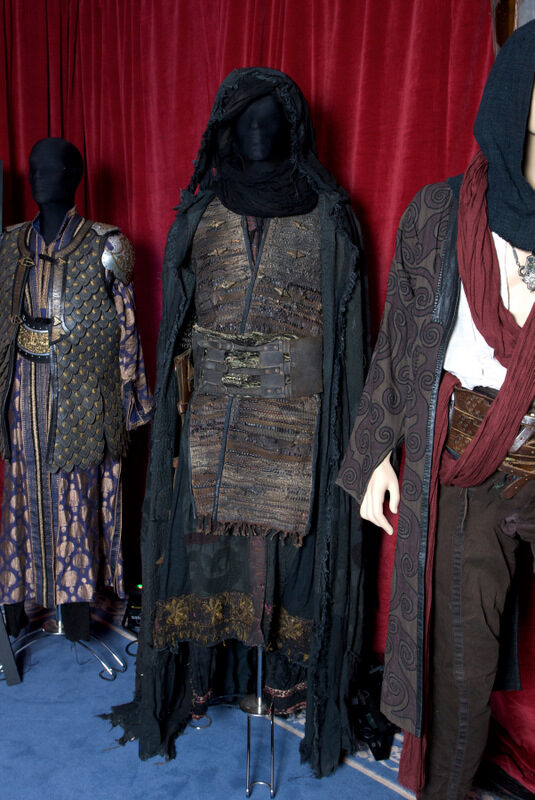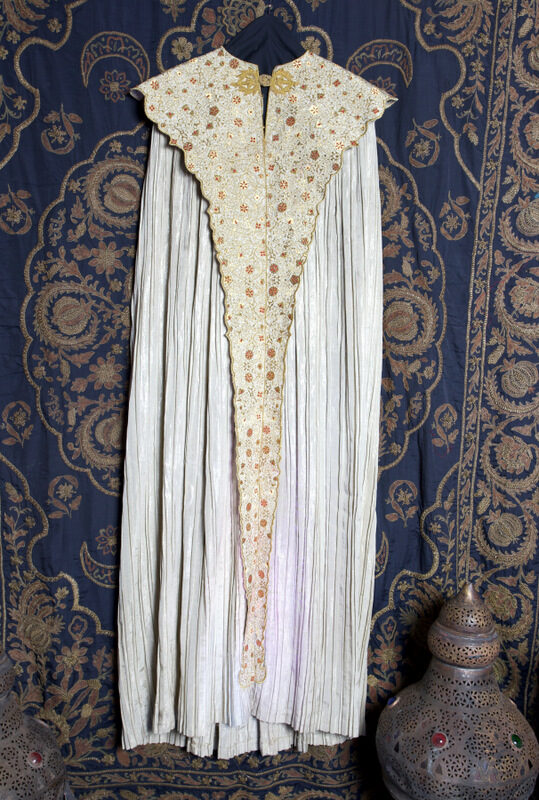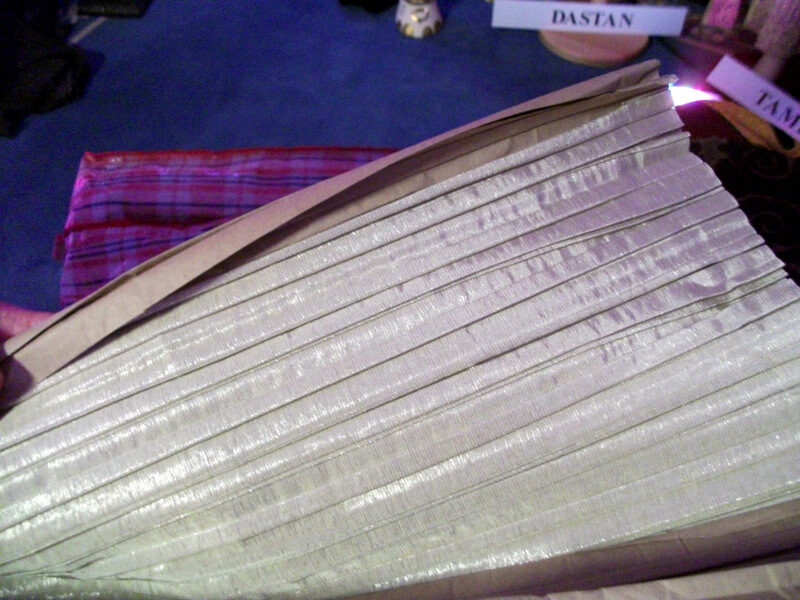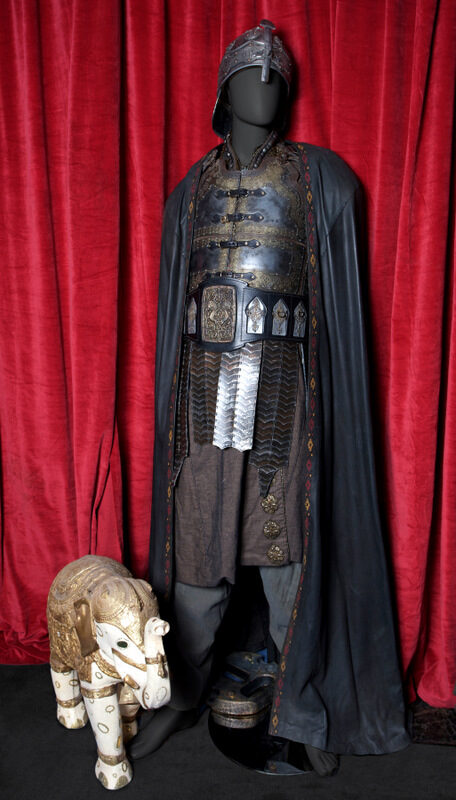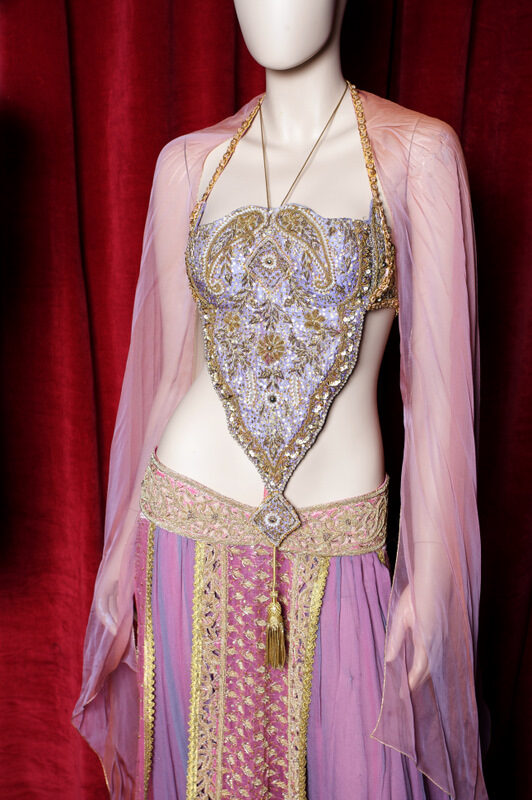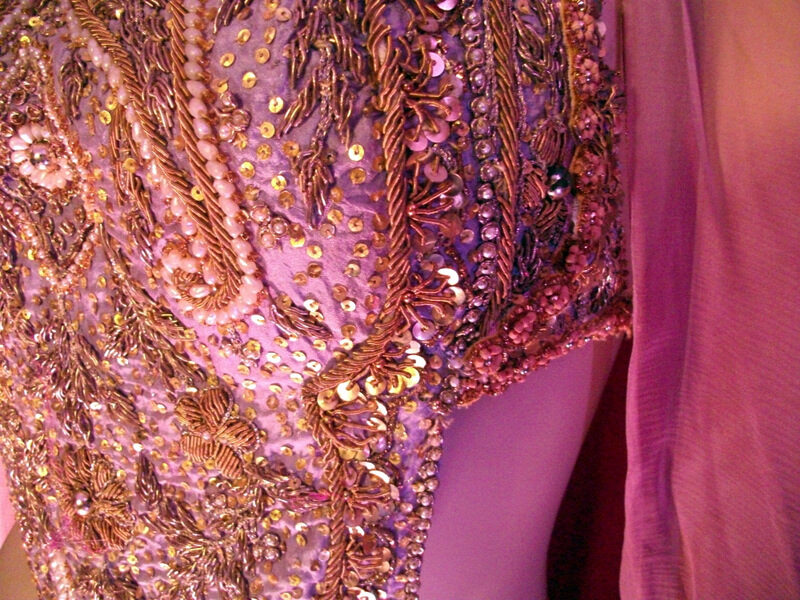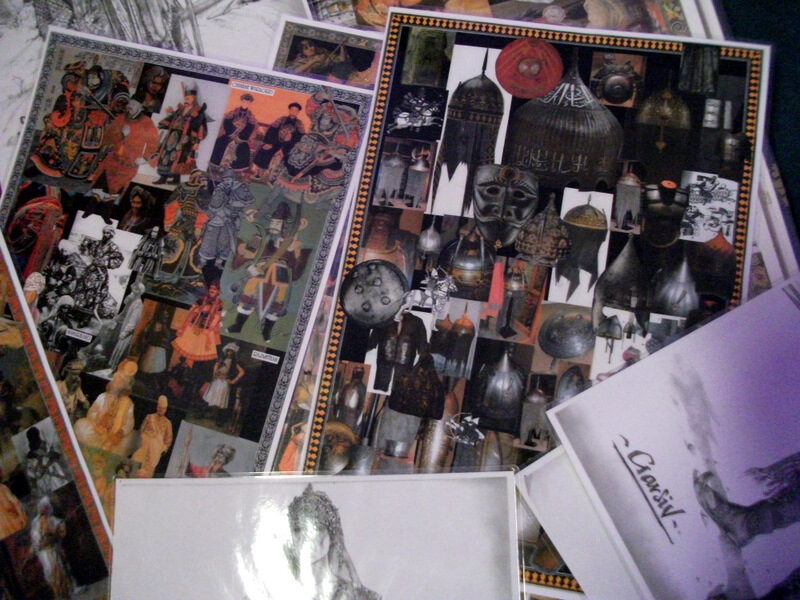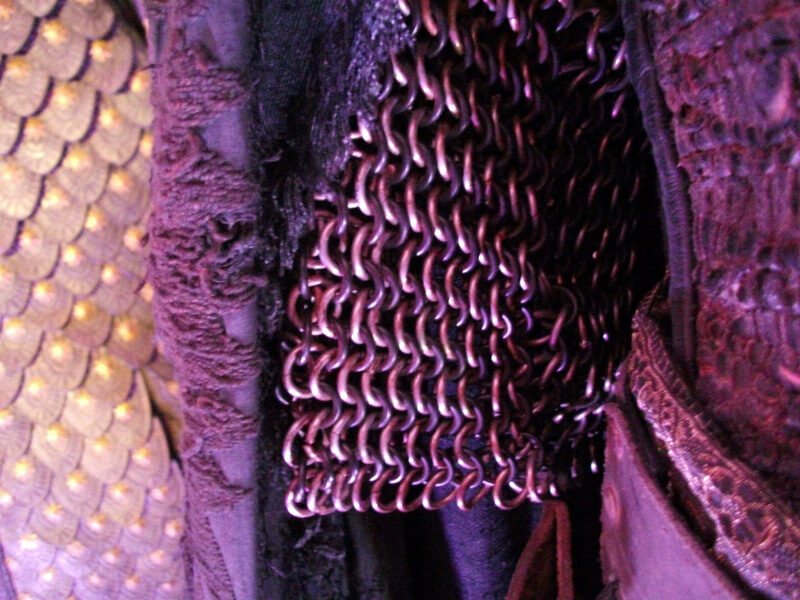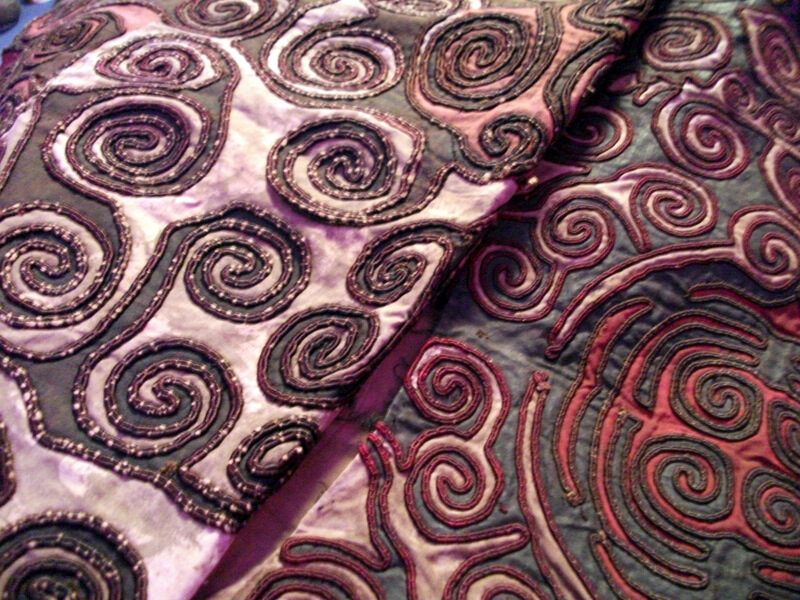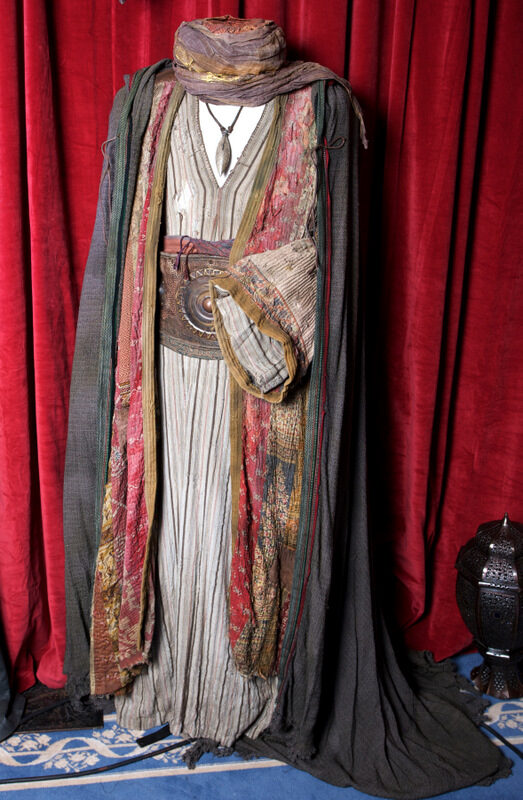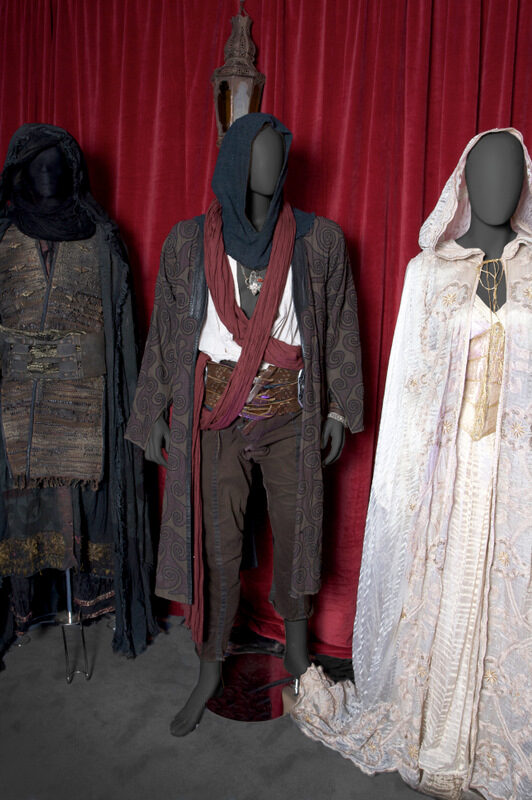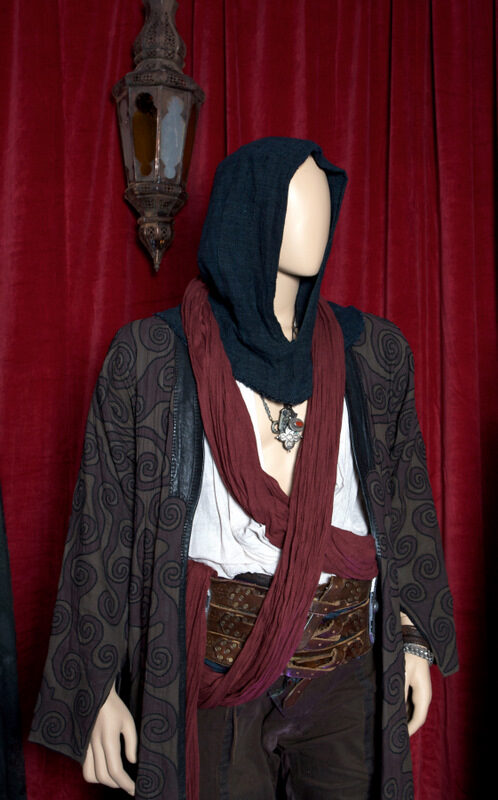Prince of Persia: Firsthand Look at the Costumes |
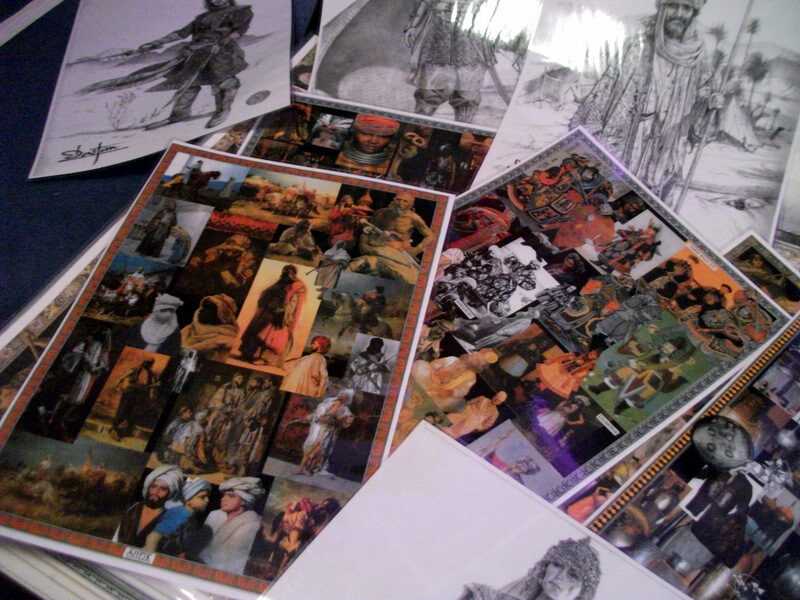 © 2010 Chris Laverty. All rights reserved. 11 Jun ’10
© 2010 Chris Laverty. All rights reserved. 11 Jun ’10
Clothes on Film were lucky enough to get an up close look at the actual costumes from Prince of Persia.
Costume Designer Penny Rose had to create 7,000 costumes for the film. She worked out of a massive warehouse with racks and racks of clothes, footwear and belts, dyeing on one side and hand-tooling leather on the other. As an experienced designer, Rose is adept in finding the second life of items such as recycling bedspreads for robes and even carpet for boots. She is widely known and respected for her organisational ability.
Using fabrics from around the world including China, Malaysia and, predictably, Morocco, Rose set up her workshop in Marakesh where garments were sewn, coloured and eventually ‘broken down’ to add authentic wear and tear. One trick was to stonewash leather in a cement mixer. Nothing could look too fresh and ‘costumey’. They were supposed to be well worn clothes, mostly old and tattered:
Here you can see that big belts capture the imagination of Prince of Persia’s young (mostly male) audience as they appear more ‘hero like’ on screen.
The Alamut prayer robe was created from a heavily pleated, paper-like fabric with metal running through the centre that Penny Rose found at Portobello Road market in London. The finished effect is somewhat similar to Fortuny’s ‘Delphos’ gown from 1907 of twisted and pleated silk satin.
There is detailed lining in practically all of her costumes. Though it is unlikely any of these linings would ever be seen on camera, this demonstrates the astonishing level of commitment Rose brings to her work.
Toby Kebbell’s armour ensemble. Lots of superior quality, unlined leather was used. Sniffing the costumes they retained a fusty scent of exotic lands. In other words there was still some sand and grit in the material.
Gemma Arterton’s ‘serving outfit’ is lined entirely in pink. The silk is impossibly light and delicate to the touch.
Rose claims The Orientalists series of books as her primary influence for the film. This exclusive look at her ‘mood boards’ shows how she combined such thoughts and inspiration into the final pieces. They show a variety of geographical styles from, amongst others areas, Lebanon, Turkey and Algeria.
Toby Kebbell insisted on wearing only his authentic armour throughout the film, although this lighter weight version was used by his stunt team. Penny Rose has applied for patent on this realistic new armour she created, constructed of interlocking rubber and aluminium rings.
This original Turkish cloth (left) was ‘brightened’ and then replicated by laser machine cutting.
Up close you can really see where the cheese grater went to work on Alfred Molina’s costume. Comparing his with the Orientalist rendering, Rose’s defacement is relatively restrained. Yet it should be remembered that Orientalist works were painted during Victorian times and should be interpreted as a ‘romantic’ portrait of Eastern culture.
Jake Gyllenhaal’s ‘spiral coat’ was Penny Rose’s personal favourite costume. It was worn by his character as a signature piece. An anti-bacterial spray was used on all outfits worn in the film. When shooting in temperatures of up to 120 degrees, perspiration was obviously going to be an issue.
If you have not already seen Prince of Persia: The Sands of Time, do so. If you are not expecting Raiders of the Lost Ark in a tunic you will be pleasantly surprised. Plus these costumes really are something on screen.
© 2010 – 2012, Chris Laverty.
